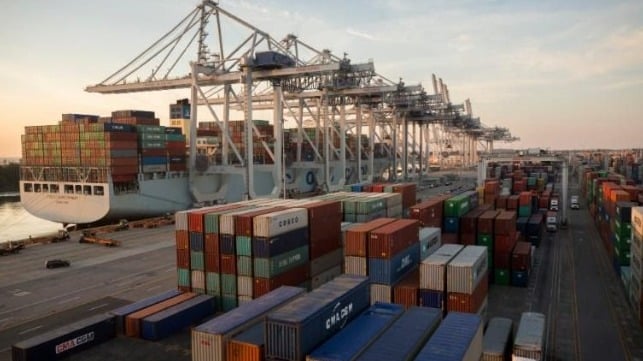Long-Term Contract Freight Rates at Historic Highs Reports Xeneta

Contracted ocean freight rates are still climbing according to the latest analysis from market intelligence firm Xeneta. Their data is showing one of the highest ever monthly rate increases and they are predicting that there are few signs of relief on the horizon.
The latest XSI Public Indices report from Xeneta, which tracks data on real-time shipping rates and analyzes more than 160,000 port-to-port pairings jumped nearly six percent in January. The index is at historic highs up 4.5 percent year over year.
The XSI effectively takes the temperature of the long-term contracted market, says Xeneta saying it is capturing the latest rates from leading shippers. That temperature is currently through the roof, with congested ports, a lack of equipment, and lop-sided demand putting container shipping companies in a position of unparalleled strength during negotiations. The high spot rates seen on key trading lanes over the past few months have cascaded down into contracted agreements, putting the squeeze on shippers worldwide, according to their latest analysis.
“The reasons behind this are complex, but it’s driven by strong export traffic from China that far outstrips imports, leaving containers marooned in, for example, European ports when they’re desperately needed back in the Far East,” comments Xeneta CEO Patrik Berglund. “Added to that you have extreme congestion at some hubs pushing up waiting times. This serves to further reduce already strained capacity, exacerbating the imbalance in supply and demand. And then of course there’s the ongoing impact of COVID-19, with increased online sales married to disruptions in supply chains and, unfortunately, outbreaks amongst essential workers.”
The XSI round-up of regional imports and exports on key corridors shows a similar impact. In Europe, imports notched up their highest ever monthly XSI increase, surging by 19.3 percent mostly driven by flows from Asian origins. That drove the benchmark up 12.5 percent year-on-year. However, the supply demand imbalance is evident on the export side, with a 1.9 percent fall, down 1.6 percent compared to January 2020, Xeneta reports.
In the Far East, the picture was reversed, with exports climbing by 15.1 percent (leaving the index at an all-time high – up 17.3 percent year-on-year), while the import figure fell 4.6percent, down 11.1 percent against this time last year. The US import benchmark showed somewhat less volatility overall, with a rise of under one percent, moving up just a half a percent year-on-year. Some US importers seem to have been able to compensate for the vast increases on the trans-Pacific with decreases on other import trades. However, exports fell by their second-largest ever recorded dip, with the figure dropping 6.2 percent. This moves the index down 17.7 percent year-on-year.
“What will happen next?” says Berglund. “It’s impossible to say with any confidence, but we can no doubt expect further change. We know that Beijing is keen to stabilize rates and protect exports. So, if we begin to see importers abandoning exports from Asia due to extortionate rates, then expect the authorities to step in. But what measures will they, or can they, take?”
With so much uncertainty, Xeneta is advising companies to maintain flexibility in the procurement strategies while not committing entirely to long-term contracts at these all-time high rates and using market insights to look for opportunities.
